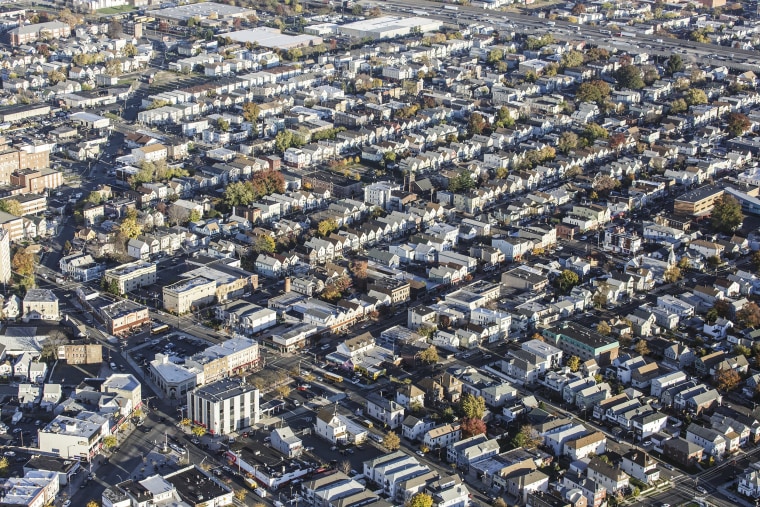It's getting harder for many Latinos in the United States to access affordable housing, reliable transportation services and green spaces — resources that are building blocks to healthy lives, according to a report published Tuesday.
“When combined in a single community, they form the foundation for healthy, active lifestyles that allow further access to workplaces (financial stability), health and educational resources, and social networks,” wrote experts at Salud America!, a UT Health San Antonio research organization that focuses on health disparities.
Salud America! found that Latino homeownership rates have been dropping over the past three years, suggesting that more Latino families are increasingly more dependent on home rentals.
Approximately two-in-four Latinos rent their homes, compared to one-in-four whites. Latino tenants with children are three times more likely to be evicted from their homes, putting Latina women and women of color at a higher risk of displacement, research shows.
Displacement also happens when Latino neighborhoods are hit by the effects of gentrification, which Salud America! defines as “a type of neighborhood change in which real estate appreciation leads to involuntary displacement and significant cultural change.”
Higher housing costs, and longer, tougher commutes
As property values increase in gentrifying areas, landlords increase rent prices, but Latinos' annual incomes have remained virtually the same for at least the past decade.
The higher rents in more desirable city areas are forcing many Latino families to move further away to cheaper, but more remote, neighborhoods.
According to Pew Research, Hispanics have a median income of $30,000.
Around 56 percent of Latinos feel burdened by high housing costs. the report found. Hispanics tend to spend more than 30 percent of their income on housing-related costs, making it more difficult to afford utilities, food, childcare and health care.
One of the side effects of moving farther away from metro areas is facing costly transportation challenges to get to work, take the kids to school or access health care services.
A third of Latinos use public transportation daily or weekly, especially the 12 percent who don’t have access to a car. According to Salud America!, Latinos report that public transit routes often times don’t go where passengers need to go or are suspended without notice. They also deemed the services as unreliable, unsafe and infrequent.
Salud America! found that Latinos who live in walkable or bike-friendly communities with reliable public transportation services face lower poverty rates and less air pollution. They are also more likely to access employment, engage in physical activity and reduce weight gain risks.
Living near walkable, bike-friendly communities also increases Latinos’ chances of accessing green spaces.
Two in three Latinos don’t live within walking distance of a park, with less access to physical activity and social spaces. Parks also help people cope with stress and depression, the researchers found, and green spaces also promote healthier environments.
Dr. Amelie G. Ramirez, the report’s lead author and director of Salud America!, said she hopes that her research motivates community leaders to prioritize investment "in neighborhoods where the highest proportions of Latinos and low-income individuals reside” as a way to create “long-term changes in Latino health and well-being.”
What works
The study also highlights communities that have come up with solutions that could be replicated nationwide.
In Milwaukee, Wisconsin, eviction rates fell 15 percent after tenants facing displacement were given access to emergency housing aid from the American Recovery and Reinvestment Act .
“Formalization of such a program, ideally in partnership with local Latino advocacy groups that could provide assistance with paperwork and social services, would be ideal,” Salud America! said.
Protecting existing affordable housing buildings, creating new rent-controlled units, aiding renters who temporarily lose income and providing low-income families with legal services when needed are crucial to helping tenants in their homes, according to Salud America!
The researchers recommend that cities develop an affordable housing trust to fund future projects by providing certain incentives to businesses. Another solution is to erode zoning laws that prohibit or limit the construction of lower cost multifamily homes in order to increase affordable housing across Latino communities.
Free city land for affordable housing complexes, quick permit processes, inclusionary zoning and low income housing tax credits are some of the tactics cities can use to push developers into creating walkable, bike friendly and affordable housing projects near public transportation hubs.
When it comes to improving transportation access, cities should expand public transit routes to where the highest proportion of low-income families live, Salud America! recommended.
In Minneapolis, Minnesota, city council officials are working toward this goal as part of an approved capital spending resolution for street maintenance and safety improvements. At least 40 percent of all transportation projects funded through 2022 have to be developed in high poverty areas, which account for 23 percent of Minneapolis’ streets.
Repurposing vacant homes and lots present good opportunities to create new green spaces or affordable housing projects for Latinos, Salud America! stated.
New green space initiatives are particularly effective when they meet additional needs: Parks can be used as hubs for neighborhood events or as places to provide social or health care services, and greenways can serve as school routes or to address public transit needs.
Maintenance of green spaces and Latino-focused programming also help increase perceptions of safety, ownership, cultural relevance and “belonging,” the report reads.
“These are the kinds of changes that form the foundation for healthy, active neighborhoods that allow further access to jobs, health and educational resources, and social networks, all of which play a role in improving health equity for Latinos and all people,” Ramirez said.
FOLLOW NBC LATINO ON FACEBOOK, TWITTER AND INSTAGRAM.

